The longest and deepest underwater road in the world - Part of the main European highway E39
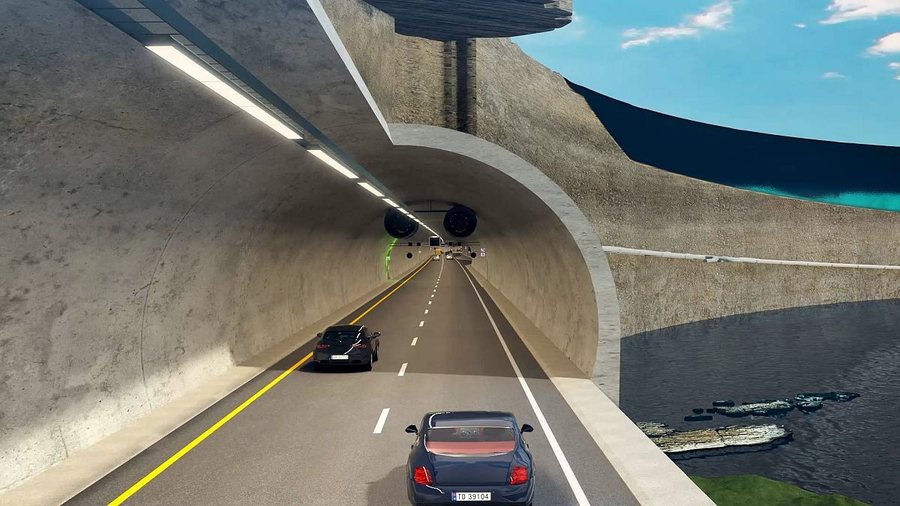
Norway is building the world's longest and deepest underwater tunnel, one of Europe's most ambitious engineering projects, which it hopes will boost the country's transport links and infrastructure. Running beneath the country's fjords, the Rogaland Fixed Link, or Rogfast, will be around 26.7km long and 390m deep at its deepest point underwater.
Once completed in 2033, the tunnel link will reduce travel time between Norway's two largest cities, Stavanger and Bergen, by 40 minutes. The Rogfast project, whose construction is nearly halfway through, is part of the main European highway E39, which runs along the west coast of the Nordic country.
Connecting cities such as Kristiansand, Stavanger, Haugesund and Bergen, it will also replace ferry crossings and make the journey smoother, according to the Norwegian road authority behind the project.
"Stavanger is the fourth largest city in Norway and Bergen is the second largest, so we hope that it is possible that this project will be able to reduce travel time for workers also when they travel to Stavanger or Bergen on a daily basis," said Oddvar Kaarmo, project manager of the Rogfast project at the Norwegian Public Roads Administration.
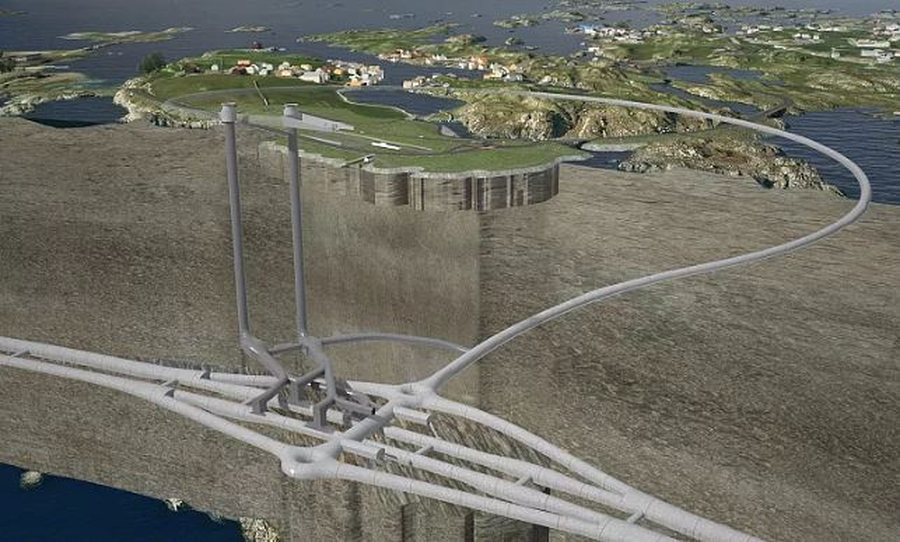
One of the key design features of the new underwater highway is around the midway point where a pier connects the island of Kvitsøy, Norway's smallest municipality, to the main tunnel in the cliff below. The Rogfast Tunnel will have two lanes of traffic in each direction. Beneath Kvitsøy, the lanes meet at two roundabouts being built 260 m below sea level.
"We've produced roundabouts in tunnels before. But this may be one of the earliest builds where we have this intersection area with two roundabouts in the tunnel. As far as I know, I haven't seen two roundabouts in a cross-section area in a tunnel before," Kaarmo said.
The two roundabouts under the island will allow traffic to flow even when one lane is closed. "If something happens and we have to close part of the tunnel, we can run the tunnel using one pipe and traffic in each direction on one pipe," he added. The double-tube structure is also a safety measure.
"If a truck or a lorry [catches] up in front of you and you're not able to turn around and get out, you can just look for these green doors with exit signs… and you'll be able to walk to the next tunnel pipe. And we have this camera system that [lets us] know exactly where you are. And we can pick you up and get you out of the Camo."
The Rogfast project, which is being built in parts at a cost of 25 billion Norwegian kroner (2 billion euros), is currently halved after ground was broken in 2018. "On the north side, about 65 percent of the tunnel is produced and then it's just tunnel production like drilling and blasting. And on the southern end in Randaberg, it's about 45 percent [completed]," Kaarmo said.
Unlike the Fehmarnbelt fixed link currently under construction between Germany and Denmark which uses a modular construction method, Rogfast is being blasted and drilled directly through solid rock, a method Norway uses to ensure stability and durability under water pressure.
"You're traveling through solid rock. We have this distance between the roof in the tunnel to the bottom to the sea. Our regulations require 50 m. So you're traveling to the bottom of the sea. We have underwater road tunnels that have that construction. And the new tunnel between Germany and Denmark, there they're putting the boxes in and putting the boxes together and they didn't say they don't go down."
"In Norway, we produce tunnels quite cheaply, if you compare it to a bridge for example. And we have about 40 underwater road tunnels in Norway and we are familiar with the construction. So it is normally easier and cheaper to build an underwater road tunnel than a bridge to the same island, " he added.
The Rogfast fixed link is scheduled to be completed by the summer of 2033. " This will help seafood producers reach the market in a better way without ferries, " Kaarmo said.
" There will be commuters, industry and maybe even tourism. Because the west coast of Norway is a part of Norway that tourists often seek out. For example, Bergen. We have a lot of tourists in Bergen. And when we have this road project that will allow us to travel to Bergen in a shorter time, most likely, tourists will have their eyes on this part of Norway even more than today," he noted. The Norwegian Roads Authority estimates that 13,000 trips will be made every day for the new tunnel by 2053.
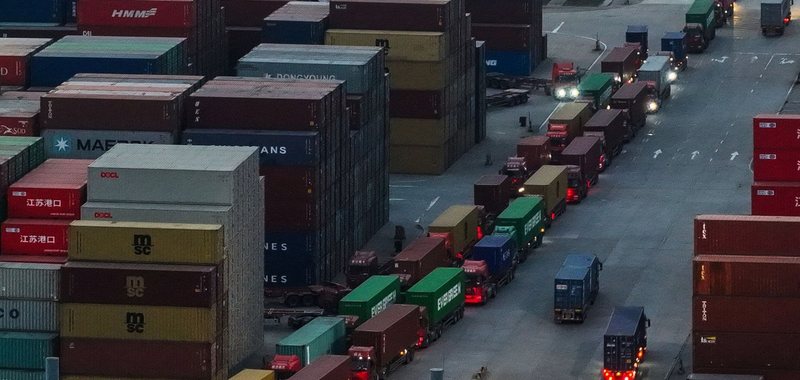
China imposes 84% tariffs on US goods as Trump's trade war escalates!
China said it is raising its retaliatory tariffs on the United States to 84%, from 34%, effective Thursday. In a statement, the Chinese finance ministry said......
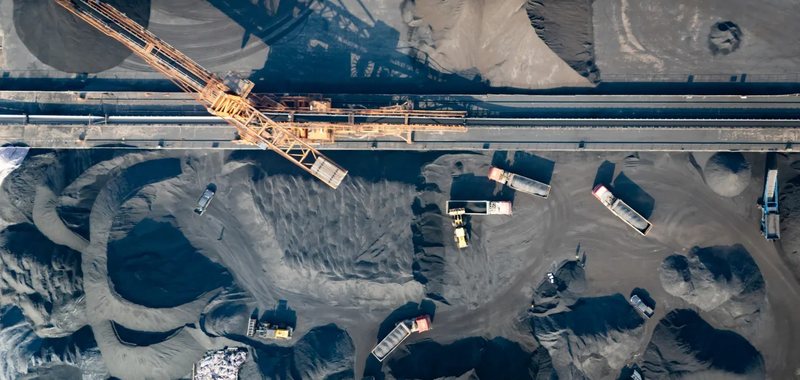
Trump "clears the way" for coal in the US - New measures ease production, while energy demand increases
United States President Donald Trump signed executive orders aimed at increasing coal production, in his latest action that runs counter to global efforts to......
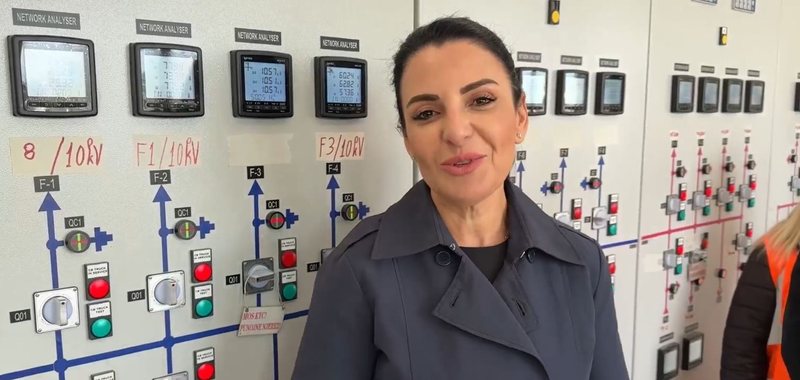
Balluku inspects works for the new Kuçova substation: It serves residents, the NATO air base and oil wells
The Kuçova electrical substation is undergoing a deep reconstruction. Built in 1956 and with equipment from the same period, which directly affects the......

Commercial banks are under in-depth investigation - Competition Authority: Abuse in the life insurance market for loans
The Competition Authority has launched an in-depth investigation into second-tier banks. According to the official announcement, an in-depth investigation......

How much does a public master's degree cost a student in Albania? Analysis by faculties, average prices range from 99 thousand to 210 thousand lekë
In Albania, pursuing a master’s program at public universities comes with varying costs, depending on the faculty, study program, and credit load. A Scan......

The administration is not only "attracting" new applicants/ In 2024, cases of dismissals from the civil service decreased by 36%.
Demand for a civil service job has been high in recent years, with around 17.5 applicants applying for a position in 2024 alone. A high number of applicants......

Trump's tariffs take effect - New measures "shock" markets. China is punished with a 104% tax
President Donald Trump's "reciprocal" tariffs on dozens of countries have taken effect, including massive 104 percent duties on Chinese goods. Trump's......

DP presents program for Security and Order - Berisha: They will be the absolute greatest priority
The “Democratic Party-Alliance for a Greater Albania” has presented its program for Security and Order. According to Sali Berisha, for the DP and its......





















